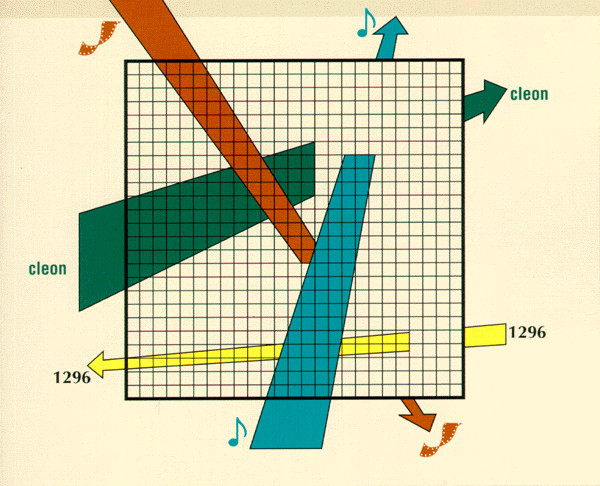|
 Jane C. Blake
Jane C. Blake
Managing Editor
In answer to a recent Journal survey question, half
of those who responded said they would like to see a variety of
topics in each issue; half prefer the single-topic format. This
issue of the Digital Technical Journal will please
those who like variety. The papers herein address networking,
database performance, software processes, PCs, and chips. In the
future, we will try to please readers on both sides of the
question by presenting single-topic issues, such as Workflow
Software upcoming, and issues that encompass a range of topics.
Our opening paper is about the GIGAswitch packet-switching
system, used to increase data transfer among interconnected LANs
and in workstation farms. At 6.25 million connections per
second, GIGAswitch is among the industry's fastest multiport
packet-switching systems. The paper by Bob Souza, P.G.
Krishnakumar, Cüneyt Özveren, Bob Simcoe, Barry Spinney, Bob
Thomas, and Bob Walsh is a substantive overview of GIGAswitch,
the first implementation of which includes an FDDI bridge. The
authors discuss the major design issues, including the data link
independent crossbar, the arbitration algorithm (called
take-a-ticket), and the techniques used to ensure the robustness,
reliability, and cost-effectiveness of the switch.
Just as critical as network performance in high-end system
environments, such as stock exchanges and banking, is the
performance of server-based database management systems. In their
paper on the DEC Rdb version 6.0 database, Lou Dimino, Rabah
Mediouni, T.K. Rengarajan, Mike Rubino, and Peter Spiro examine
earlier steps taken to establish good database performance on
AXP systems and compare these and traditional approaches with the
new enhancements that shorten the code paths, minimize I/O
operations, and reduce stall times. Notable among performance
results was a world record for transactions per second in a test
of the Rdb version 6.0 database running on a DEC 10000 AXP
system.
Data availability is another important characteristic of high-end
systems. Volume shadowing is a feature of the OpenVMS operating
system that increases availability by replicating data on disk
storage devices. The port of Volume Shadowing Phase II to
OpenVMS AXP is a case study of how a small engineering team can
use software development processes to tackle complex system
design tasks and deliver improved quality products on accelerated
first-release schedules. Bill Goleman, Robert Thomson, and Paul
Houlihan describe key process innovations, including early code
inspections and profile testing, which simulates complex
scenarios in order to reveal errors.
In the first of two papers on Alpha AXP PC products, Dave Conroy,
Tom Kopec, and Joe Falcone trace the design choices,
alternatives, and methodology used in the evolutionary
development of the first AXP PCs. The authors explore the
lessons learned from designing two experimental systems; the
first demonstrated the feasibility of building a PC utilizing the
DECchip 21064 microprocessor and industry-standard components;
the subsequent system incorporated the EISA bus. They then review
the design of the DECpc AXP 150 product, which built on the
successes of the experimental systems and was completed in just
12 weeks.
Future Alpha AXP PCs and desktop systems will use new Alpha AXP
microprocessors that have higher levels of system integration for
performance yet employ packaging and clocking techniques that
reduce system cost. Dina McKinney, Masooma Bhaiwala, Kwong Chui,
Chris Houghton, Jim Mullens, Dan Leibholz, Sanjay Patel, Del
Ramey, and Mark Rosenbluth explain the trade-offs and results of
the 21066 design, which is the first microprocessor to integrate
a PCI bus controller along with many other system-level
functions.
At the close of this issue, we have listed the referees who
offered their expert advice on the content and readability of
papers submitted to the Journal between January 1993
and February 1994. We are grateful for the specialized knowledge
they have shared with authors and editors alike.
|
|